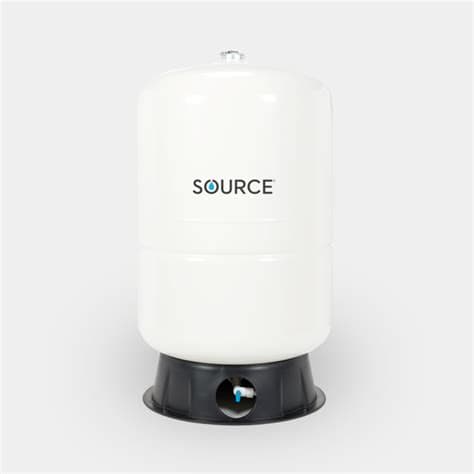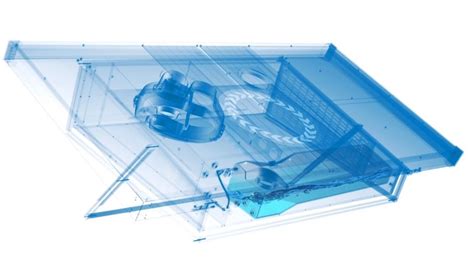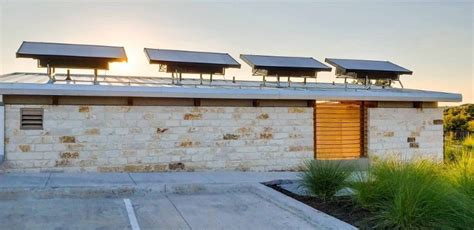What Are Source Hydropanels?
Source hydropanels, developed by the Arizona-based startup Zero Mass Water, are a revolutionary technology that extracts clean, renewable drinking water directly from the air using only sunlight as an energy source. These solar-powered panels are designed to operate independently of existing infrastructure, making them a valuable solution for water-scarce regions and communities without access to reliable, safe water sources.
How Do Hydropanels Work?
The Source hydropanel system consists of a series of panels that contain advanced water capture technology and a built-in reservoir. The process of generating water can be broken down into the following steps:
- Air flows into the hydropanel through a special material that attracts water vapor.
- The solar-powered fans draw in air, while the solar thermal technology generates heat.
- The heat converts the captured water vapor into liquid water, which is collected in the reservoir.
- The water is mineralized with calcium and magnesium for improved taste and health benefits.
- The clean, mineral-rich water is stored in the reservoir, ready for dispensing.
Each hydropanel can produce an average of 3-5 liters of water per day, depending on environmental conditions such as humidity and sunlight availability.
The Importance of Hydropanel Water
Addressing Water Scarcity
Water scarcity is a global issue that affects millions of people worldwide. According to the World Health Organization, 1 in 3 people globally do not have access to safe drinking water. By 2025, half of the world’s population is expected to live in water-stressed areas. Source hydropanels offer a viable solution to this growing problem by providing a decentralized, sustainable way to generate clean drinking water without relying on groundwater, surface water, or rainfall.
Reducing Carbon Footprint
Traditional water treatment and distribution systems are energy-intensive and contribute to greenhouse gas emissions. Source hydropanels, on the other hand, rely solely on renewable solar energy to produce water, making them a carbon-neutral solution. By reducing the need for water transportation and the associated emissions, hydropanels can help minimize the water sector’s carbon footprint.
Enhancing Water Quality
Source hydropanels produce high-quality drinking water that is free from contaminants often found in groundwater or surface water sources, such as chemicals, heavy metals, and microorganisms. The mineralization process also adds essential minerals like calcium and magnesium to the water, enhancing its taste and nutritional value. This is particularly important in areas where water quality is compromised due to pollution or inadequate treatment facilities.

Applications of Hydropanel Water
Residential Use
Source hydropanels can be installed on the roofs of residential buildings, providing a reliable source of clean drinking water for households. This is especially beneficial in areas with limited access to municipal water supply or those that rely on water delivery services. By generating their own water, families can reduce their dependence on external sources and enjoy a more sustainable and self-sufficient lifestyle.
Commercial and Institutional Use
Businesses, schools, hospitals, and other institutions can also benefit from installing Source hydropanels. These establishments often have high water demands and can significantly reduce their water bills by generating their own water supply. Moreover, by showcasing their commitment to sustainability and environmental stewardship, they can enhance their reputation and attract environmentally conscious customers or stakeholders.
Emergency Response and Disaster Relief
In the aftermath of natural disasters or in emergency situations where water infrastructure is damaged or disrupted, Source hydropanels can provide a rapid and reliable source of clean drinking water. The panels can be quickly deployed to affected areas, ensuring that people have access to safe water for drinking, cooking, and sanitation purposes. This can be a lifesaving solution in crisis situations where water scarcity poses a serious threat to public health.
Agricultural Applications
While Source hydropanels are primarily designed for drinking water production, they can also be used in agricultural settings to supplement irrigation water or provide water for livestock. In water-scarce regions, hydropanels can help farmers reduce their dependence on groundwater or surface water sources, which may be depleted or contaminated. By using renewable, clean water from the air, farmers can improve the sustainability of their operations and build resilience against drought and water shortages.

Advantages of Hydropanel Water
Independence from Infrastructure
One of the key advantages of Source hydropanels is their ability to operate independently of existing water infrastructure. This makes them an ideal solution for remote or off-grid locations where access to municipal water supply or groundwater is limited. By generating their own water, communities can reduce their reliance on external sources and build self-sufficiency in water provisioning.
Scalability and Modularity
Source hydropanels are designed to be scalable and modular, allowing for easy expansion of water production capacity as needed. The panels can be installed in arrays of various sizes, depending on the water requirements of the end-user. This flexibility makes them suitable for a wide range of applications, from single-family homes to large-scale institutional or commercial installations.
Low Maintenance and Long Lifespan
Hydropanels are engineered to be durable and low-maintenance, with an expected lifespan of 15-20 years. The panels are made from high-quality, weather-resistant materials that can withstand harsh environmental conditions. The system requires minimal upkeep, primarily consisting of periodic cleaning of the panels and replacement of the air filters every few years. This low maintenance requirement makes them a cost-effective and hassle-free solution for long-term water provisioning.

Challenges and Limitations
Initial Cost
One of the main challenges associated with Source hydropanels is the relatively high upfront cost. The panels are more expensive than traditional water sources like wells or municipal water connections. However, over the long term, the cost of hydropanel water can be competitive with other water provisioning options, especially in areas where water is scarce or expensive. Moreover, as the technology continues to develop and scale, the costs are expected to decrease, making hydropanels more accessible to a broader range of users.
Environmental Constraints
The water production capacity of Source hydropanels is influenced by environmental factors such as humidity, temperature, and sunlight availability. In areas with low humidity or limited sunlight, the panels may produce less water than in optimal conditions. However, the company has been continuously improving the technology to enhance its performance in diverse climates, and the panels have been successfully deployed in various regions around the world.
Water Storage and Dispensing
While Source hydropanels generate clean drinking water, users must still consider how to store and dispense the water effectively. The built-in reservoir in each panel has a limited capacity, so users may need to install additional storage tanks or connect the panels to a larger water storage and distribution system, depending on their water needs. This may require additional planning and investment beyond the initial cost of the panels themselves.
Frequently Asked Questions (FAQ)
-
Q: How much water can a single Source hydropanel produce per day?
A: On average, each hydropanel can generate 3-5 liters of water per day, depending on environmental conditions such as humidity and sunlight availability. -
Q: Can Source hydropanels work in areas with low humidity?
A: Yes, while the water production capacity may be lower in areas with low humidity, the technology has been designed to operate effectively in a wide range of climates, including arid regions. -
Q: How long do Source hydropanels last?
A: The hydropanels are engineered to be durable and long-lasting, with an expected lifespan of 15-20 years. -
Q: Are Source hydropanels difficult to maintain?
A: No, the panels require minimal maintenance, primarily consisting of periodic cleaning and replacement of air filters every few years. -
Q: Can Source hydropanels be used to provide water for irrigation or livestock?
A: While the panels are primarily designed for drinking water production, they can be used to supplement irrigation water or provide water for livestock in agricultural settings, particularly in water-scarce regions.
Conclusion
Source hydropanels represent a groundbreaking solution to the global challenge of water scarcity. By harnessing the power of sunlight and air, these panels can generate clean, renewable drinking water without relying on traditional water sources or infrastructure. The technology offers numerous benefits, including independence from water infrastructure, scalability, low maintenance, and a reduced carbon footprint.
As the world continues to grapple with the impacts of climate change and growing water stress, innovations like Source hydropanels will play an increasingly important role in building resilience and ensuring access to safe, sustainable water for communities around the globe. While there are still challenges to overcome, such as the initial cost and environmental constraints, the potential for hydropanel water to transform water provisioning in water-scarce regions is immense.
As more individuals, businesses, and institutions adopt this technology, we can expect to see a shift towards decentralized, renewable water solutions that prioritize sustainability, self-sufficiency, and equitable access to clean water for all. Source hydropanels are not just a technological innovation; they represent a new paradigm in water management that places the power of water generation directly in the hands of end-users, empowering them to take control of their water future.

No responses yet